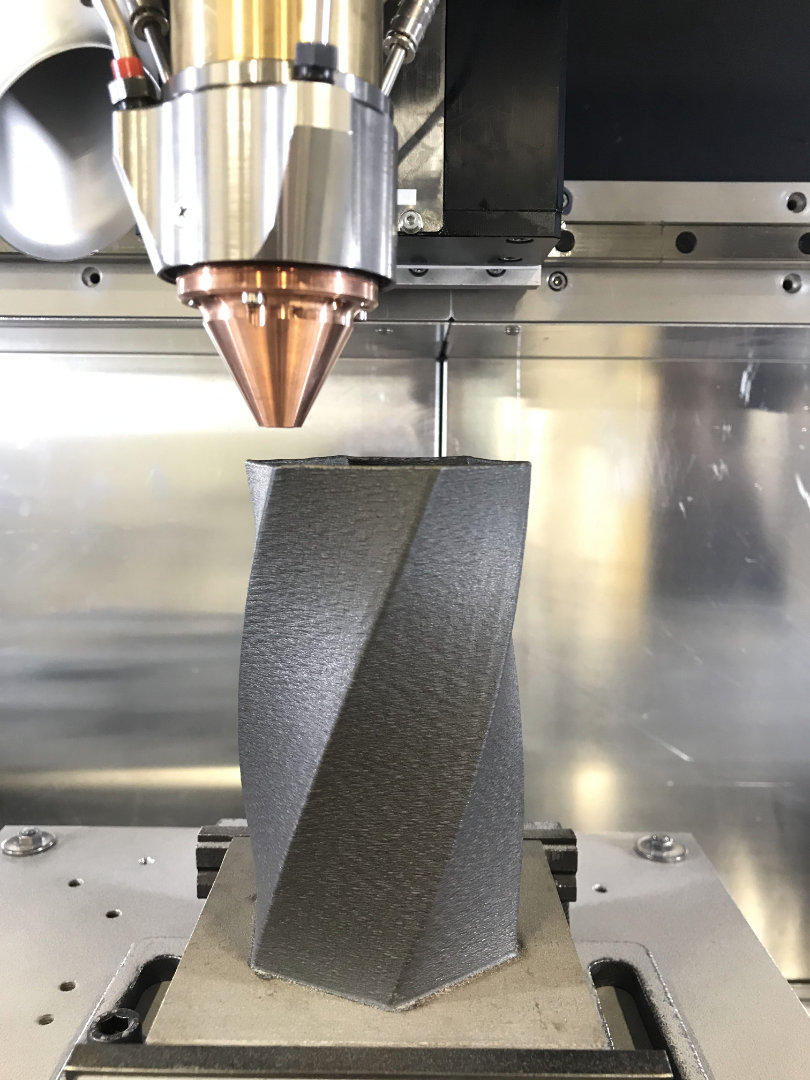Additive Manufacturing
Producing three-dimensional metal parts dirctly from CAD data is clearly one of the most prominent applications of LUNOVU’s LMD technology. In an impressive manner, all the strengths of this technology come together: high build rates, the ability to use multiple materials in one single process and last but not least the superior material quality of a true melting process.
At the same time, LMD offers impressive flexibility. This makes it possible to produce single-layer thin wall structures, even with overhangs, which are implemented without support structures. On the other hand, massive volumes can also be built up quickly, with build rates well over 1 kg / h.
3D Additive Manufacturing on 3D parts
A unique feature of LUNOVU machine systems is the ability to build 3D struktures on existing 3D parts. This is possible even if the initial part does not come with CAD data! LUNOVU’s unique scan/toolpath generation technology provides a reliable and efficient method to scan arbitrary parts directly in the machine, and to print three-dimensional structures defined by CAD data onto them. This way, customer specific geometries can be applied to cast or forged parts without any surface preparation. The entire process is impressively simple and fast, as no CNC programming is required.
Laser cladding and wear protection
The advantages of LMD-made wear protection layers are well known. They are used for many applications. Such laser cladding coatings are produced in LUNOVU LMD machines on parts of different sizes. Both gantry type and robotic systens are used. A crucial point is again the full 3D capability of the LUNOVU systems. Conventional laser cladding systems require time-consuming manual programming, which makes the process uneconomical for complex 3D parts. In contrast to that, LUNOVU LMD uses optical 3D scannning inside the machine, facilitating the definition of the coating areas with a few mouse clicks on the PC screen. The rest is done by the intelligent LMD system: calculation of tool paths which exactly follow the surface of the parts; a visualization on the PC and finally the generation of the CNC/robotic program.
Another important application are thin wear protection layers on components with rotational symmetry. The EHLA process (extreme high-speed laser cladding), which was developed at the Fraunhofer Institute for Laser Technology, is used for this. This process allows applying very homogeneous layers with only a few 100 µm thickness and represents a resource-saving alternative to conventional coatings such as hard chrome plating.
Repair applications
Using LMD for repair purposes on damaged or worn out parts is another well established process. It is used for aerospace components, such as turbine blades, or for molds and pressing tools. Also in this field the LUNOVU technology offers a unique advantage: The parts are scanned inside the machine, generating a digital model of the repair area. Interacting with the operator, the LUNOVU software can quickly generate CNC programs that are required for the repair process. Depending on the application and the required throughput, this can also be performed in a fully automated mode.

